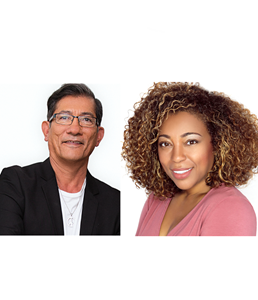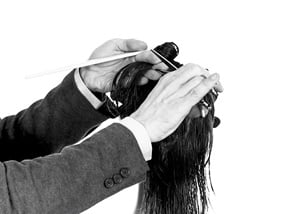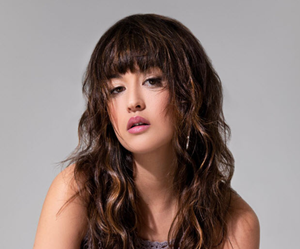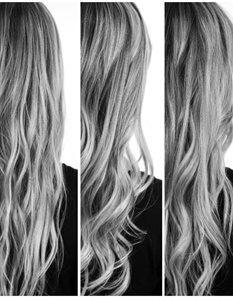
Color-treated hair can present unique challenges when being cut. This is especially true when working with very light blondes or hair that is chemically over-processed. Jesse Linares, Sam Villa ArTeam, gives tips on how to avoid cutting lines when working with this hair type.
When the ends of hair are distressed, they often become unruly - sticking out or feeling overly dry. Hair with excessive mechanical/thermal damage can also take on these characteristics. “In the most extreme cases, damaged hair must be cut away to restore vitality to the shape. However, in many instances where chemical or thermal evidence may be isolated to specific areas, simple cutting techniques may provide temporary solutions,” explains Linares.
Elevate
Categorically speaking, cutting lines in natural fall leave the most weight in a shape. Often, we diagnose and cut distressed hair right where it lives, which can easily leave us visible marks in the haircut. If possible, use elevation when cutting these sections, it will drop out invaluable length and results in lines that fall softer in the silhouette.
Cut From the Interior with Texture Tools
Within a section, if the overall length is acceptable but there is damage inside the section, consider cutting from the interior using slide-cutting tools. These tools, such as the Sam Villa Signature Series InvisiBlend Shear and Artist Series 6” Slide-Cutting Shear, allow a stylist to softly and selectively remove unwanted hair from the mid-strand out to the ends. The InvisiBlend Shear is a true slide-cutting blending shear. Due to its unique design, once the cutting teeth have passed through the hair and the shear is closed, there is no exposed blade surface, so you can close the shear inside the section and slide without damaging other hair. The Artist Series 6” Slide Cutting Shear features curved blades meant to “push” the hair, creating very soft edges that won’t distress the cuticle of chemically over-processed hair. Tools such as these are great for creating shorter lengths within a section for effect, or for selective hair removal within the interior. Particularly on highly processed pale blond hair, where cutting lines can be very apparent, utilizing these tools will diffuse hard edges for a softer finished look.
The Old “Split Ends” Trick
If the damaged ends are too evenly distributed to selectively cut, isolate distressed hair and section off a half-inch horizontal slice. Close to the root area, wrap the section flat under the ring finger, over the middle finger, and under the index finger. Hold the hair with tension and slowly slide hand out to the ends. Split ends will “pop up” as the hair is rolled over the middle finger. Carefully cut these ends as they appear. Be sure to hold the hair with firm tension, as this will not only help the ends “pop up” cleaner, but the rest of the hair will stay tightly wrapped around fingers and not be accidentally cut. Continue in half-inch sections until a visible difference is made, but check the section often to be sure not to take too much off!
“With dramatic color being at the forefront of current trends, chemically processed hair that shows cutting lines and becomes unruly from damage is a daily challenge. By healing ends with regular trims and creative techniques, as well as softening hard lines with purpose built tools, even the most compromised platinum locks can look soft and polished,” says Linares. “At Sam Villa, we will continue to give not only the tools, but the education to solve problems at the chair.”
Credits: Hair/Sam Villa ArTeam; Photo/Katie Parker; Wardrobe/Brittany Hart; Makeup/Nicole Schimel
About Expert

Sam VillaCutting
Jesse identifies with full-time salon pros, because he’s one too! He believes in education that gives salon pros the unique skill set needed for success. For example, he knows how necessary it is to produce consistent results again and again. “lt’s important to me that hairdressers understand the “why” behind trends and techniques, and thereby gain more control over their hands, their personal vision, and their business,” he says.
Linares applies many concepts from his traditional Japanese martial arts training to his education. Just like martial arts, he believes that doing hair takes decades of daily work to truly master. Jesse believes that a hairdresser’s career cannot be measured in profit and loss, but rather in how much of themselves they gave to their work. “Every haircut, every color, every style is a chance to prove what you are made of,” he says.
Like the entire Sam Villa team, Jesse approaches education differently. He delivers programs that are upbeat and motivating with an emphasis on personal integrity and skill excellence. “The moment I met Sam Villa, I knew I would one day work with him. He has always represented the working hairdresser through top-shelf education and tools designed with us in mind.”







